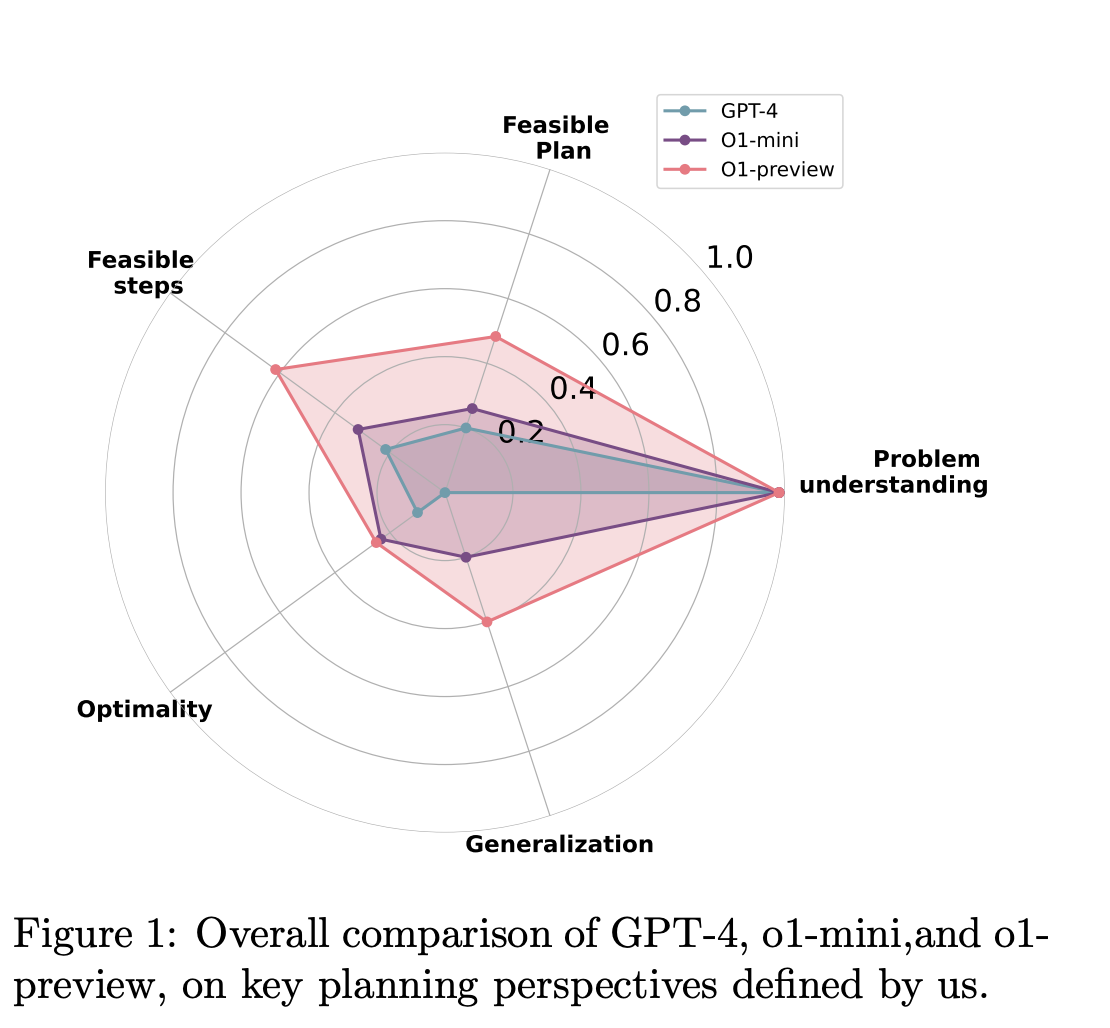
Understanding the Planning Capabilities of Large Language Models
Recent Advances in LLMs
New developments in Large Language Models (LLMs) show they can handle complex tasks like coding, language understanding, and math. However, their ability to plan and achieve goals through a series of actions is less understood. Planning requires understanding constraints, making sequential decisions, adapting to changing situations, and remembering past actions, making it a challenging area for LLMs.
Research Insights from the University of Texas
Researchers from the University of Texas at Austin evaluated OpenAI’s o1 model, which is designed for better reasoning. They focused on three key areas: feasibility, optimality, and generalization through various benchmark tasks.
Feasibility: Can the Model Create a Realistic Plan?
Feasibility refers to the model’s ability to create a plan that meets task requirements. For example, in constrained environments like Barman and Tyreworld, the o1 model showed strong performance by self-evaluating its plans and adhering to specific limitations. This self-assessment increases its chances of success.
Optimality: How Efficient is the Model’s Solution?
While creating workable plans is important, optimality—how well the model completes the task—is also crucial. The o1 model performed better than GPT-4 in some areas but often produced suboptimal solutions with unnecessary steps. For instance, in tasks like Floortile and Grippers, the model’s responses included redundant actions that could have been avoided.
Generalization: Adapting to New Challenges
Generalization is the model’s ability to apply learned planning techniques to new problems. This is vital for real-world applications where tasks can change. The o1 model struggled with complex spatial tasks, showing a decline in performance when faced with unfamiliar environments.
Key Findings and Future Directions
The study highlighted both strengths and weaknesses of the o1 model in planning. It excels in structured settings but faces challenges with decision-making and memory management, particularly in tasks requiring spatial reasoning.
Areas for Improvement
1. **Memory Management**: Enhance the model’s ability to remember past actions to reduce unnecessary steps and improve efficiency.
2. **Decision-Making**: Improve sequential decision-making to ensure each action effectively moves towards the goal.
3. **Generalization**: Develop better abstract thinking and generalization methods for improved performance in complex situations.
Get Involved
Check out the research paper for more details. Follow us on Twitter, join our Telegram Channel, and LinkedIn Group for updates. If you appreciate our work, subscribe to our newsletter and join our 50k+ ML SubReddit community.
Upcoming Event
**RetrieveX – The GenAI Data Retrieval Conference on Oct 17, 2023**.
Transform Your Business with AI
Stay competitive by leveraging AI solutions. Here’s how:
– **Identify Automation Opportunities**: Find customer interaction points that can benefit from AI.
– **Define KPIs**: Ensure measurable impacts from your AI initiatives.
– **Select an AI Solution**: Choose tools that fit your needs and allow customization.
– **Implement Gradually**: Start with a pilot program, gather data, and expand wisely.
For AI KPI management advice, contact us at hello@itinai.com. For ongoing insights, follow us on Telegram at t.me/itinainews or Twitter @itinaicom. Explore how AI can enhance your sales processes and customer engagement at itinai.com.



























